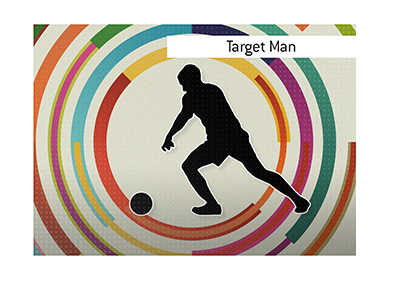Definition of Target Man
Featured Offer
Football Betting
Turn £10 Into £30 in Free Bets
Just £10 to start • £30 paid as Free Bets
UK new customers • 18+ • Quick signup
✔ Trusted by millions of UK bettors
Claim £30 Free Bets
Use code THEKING during registration
Bonus Code:
THEKING
Open Account Offer. Bet £10 & Get £30 in Free Bets for new customers at bet365. Min deposit requirement. Free Bets are paid as Bet Credits and are available for use upon settlement of bets to value of qualifying deposit. Min odds, bet and payment method exclusions apply. Returns exclude Bet Credits stake. Time limits and T&Cs apply. Registration required. Bonus code THEKING can be used during registration, but does not change the offer amount in any way. 18+ only. Gamble responsibly.


 What is a target man? Traditionally, it is a larger player who is less mobile and acts as a "target" for the team to aim for when playing the ball forward. The idea is that the target man is strong and can win headers against the opposing center backs in order to advance the team up the field.
What is a target man? Traditionally, it is a larger player who is less mobile and acts as a "target" for the team to aim for when playing the ball forward. The idea is that the target man is strong and can win headers against the opposing center backs in order to advance the team up the field. 